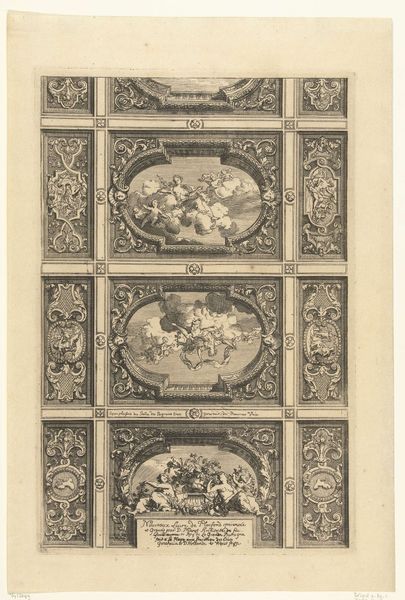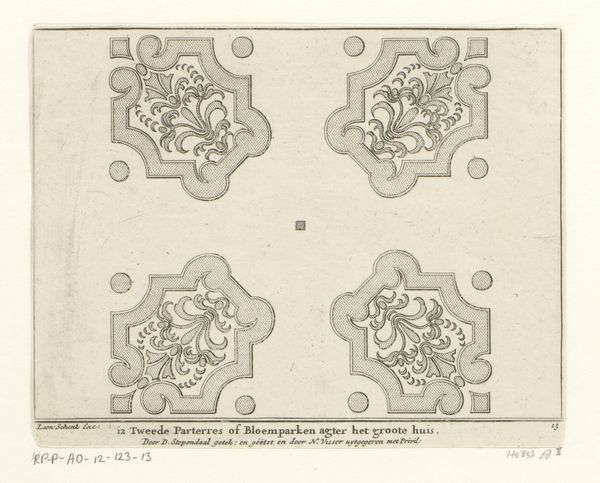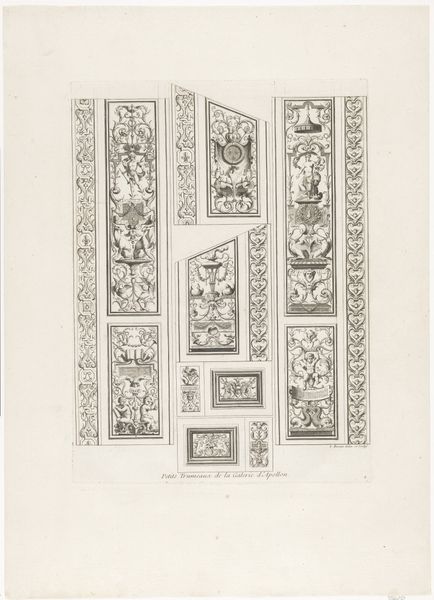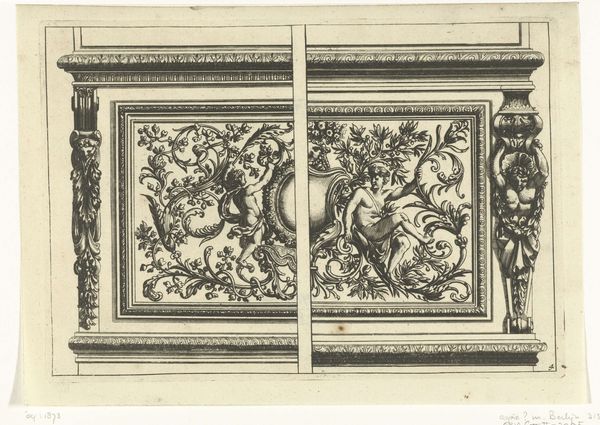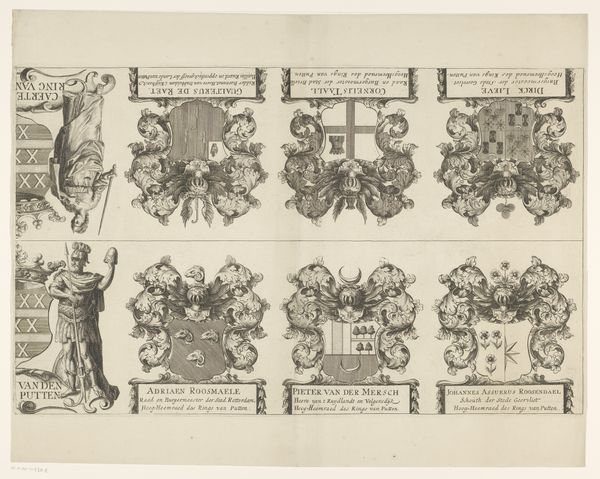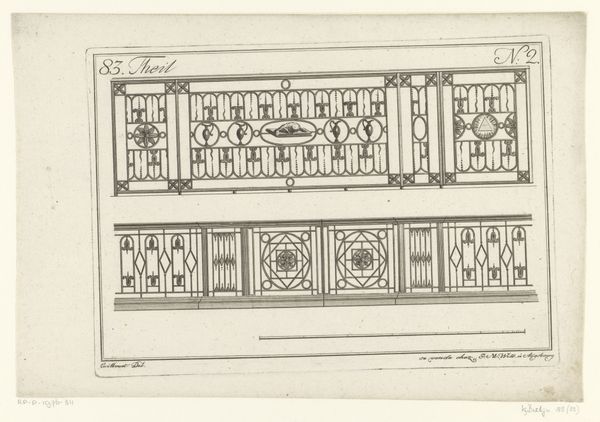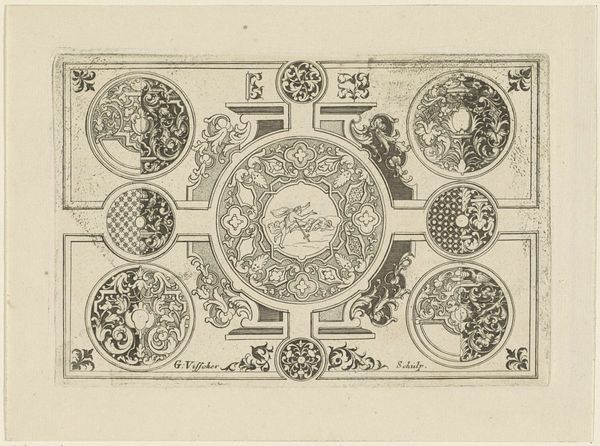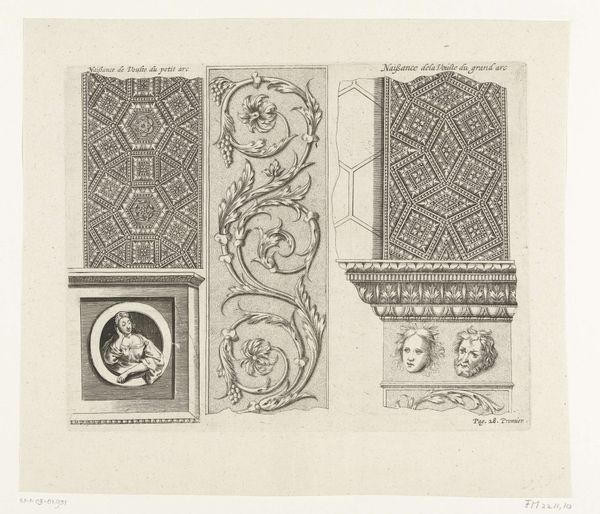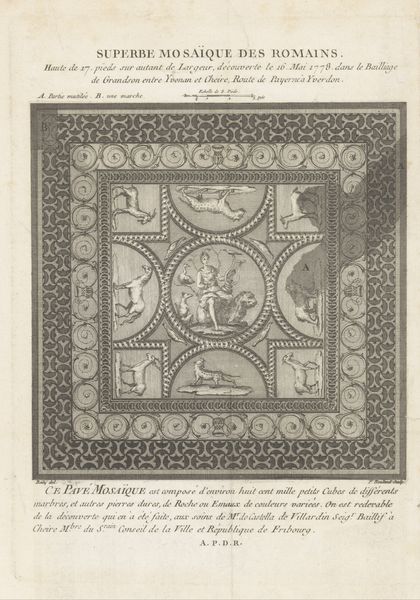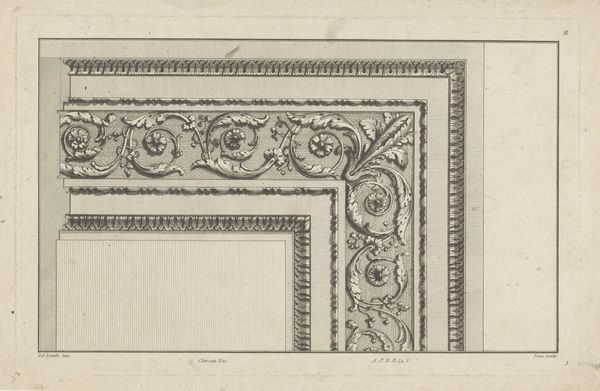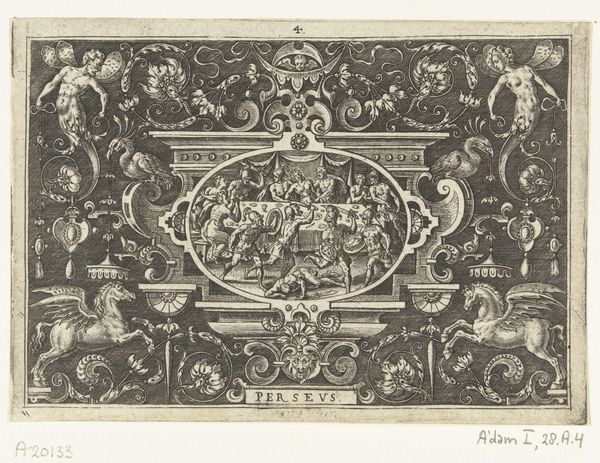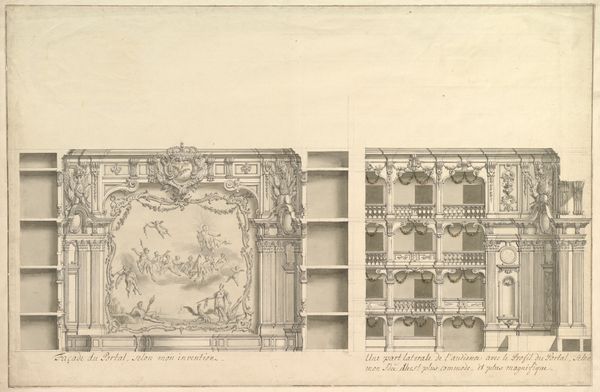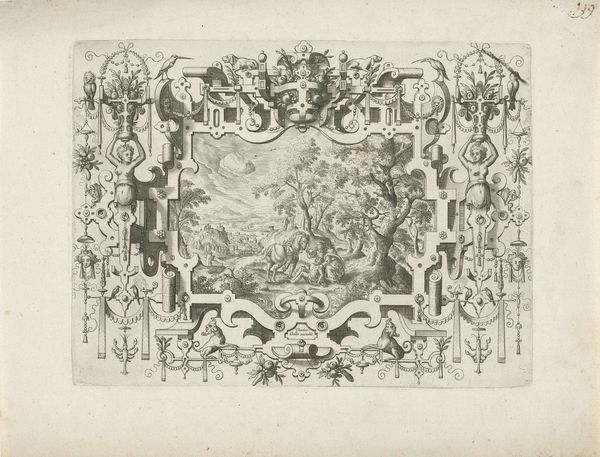
Plattegrond van bloemperken op landgoed Clingendael Possibly 1682 - 1746
0:00
0:00
graphic-art, print, etching
#
graphic-art
#
dutch-golden-age
# print
#
etching
#
landscape
#
etching
#
geometric
Dimensions: height 128 mm, width 166 mm
Copyright: Rijks Museum: Open Domain
This is Daniël Stopendaal's "Plattegrond van bloemperken op landgoed Clingendael," an etching showing the layout of flower beds, made sometime between the late 17th and early 18th centuries. Note the elaborate patterns of flora, contained within geometric shapes. These arabesque patterns, echoes of Islamic designs, found their way into European gardens, symbolizing paradise and abundance. The geometric shapes, however, speak to a very different impulse: the human desire to impose order on nature, echoing ancient Roman garden design. This tension—between the wild profusion of nature and the rational, structuring mind—reveals itself time and again throughout history. We see it in the formal gardens of Versailles, in the manicured lawns of English estates, and even in the carefully arranged ikebana of Japan. Consider how each age shapes nature to reflect its own ideals, its own sense of beauty, and perhaps its own hidden anxieties.
Comments
No comments
Be the first to comment and join the conversation on the ultimate creative platform.
